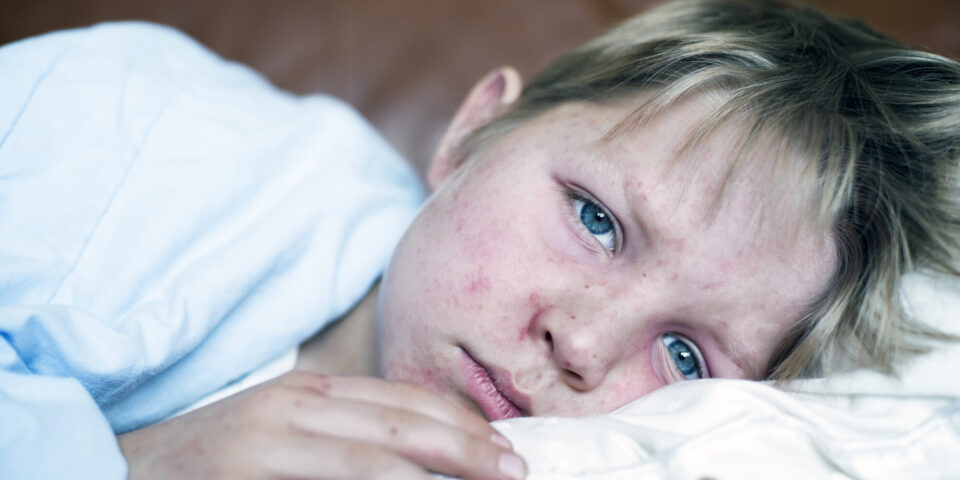Measles outbreak: Protect yourself and your family from this reemerging disease
The MMR vaccine, which protects against measles, mumps and rubella, has long been a standard part of routine childhood vaccination. Thanks to the reliable protection provided by the MMR vaccine, measles was declared eradicated within the United States in 2000. Unfortunately, faltering vaccination rates among children saw individual outbreaks occurring in multiple areas throughout the country in 2025.
As of October 2025, an ongoing measles outbreak was officially recognized in South Carolina. What does this mean for infants too young to be fully vaccinated? How can parents protect their children from this potentially severe disease? Do adults need to receive a new MMR booster?
Pediatric infectious disease specialist Robin LaCroix, MD, explained what you need to know about the current measles outbreak to protect yourself and your family.
How serious is measles?
Measles is a highly contagious viral illness. A single infected person will pass the disease on to 12-16 non-protected people they interact with, making it especially dangerous to susceptible people like very young children in daycare, unvaccinated children in schools and unprotected adults.
“90% of those who are susceptible will become infected after significant exposure, and the disease has a lot of potential for severe or even fatal complications in these unprotected populations,” said Dr. LaCroix. “About 1 in every 5 unvaccinated people who become infected will need to be hospitalized and up to 1 out of every 20 children who become infected develop pneumonia as a complication of the disease.”
In severe cases, a swelling of the brain called encephalitis can occur. Complications from the measles can lead to death.
What are symptoms of measles to watch out for?
“Measles symptoms often start to show 11-12 days after exposure,” said Dr. LaCroix. “The most common early symptoms of measles include high fever (up to 105 degrees Fahrenheit or 40.6 degrees Celsius). An infected person might also have a dry cough, runny nose or red and watery eyes.”
A few days after the onset of those early symptoms, the telltale measles rash is likely to appear. The measles rash involves large flat spots and small raised bumps which begin either on the face or neck and then spread down the body from chest and stomach to arms and legs.
Not every person infected with measles will develop a clear and obvious rash, but it is the most common sign. Some people with measles may develop tiny white spots inside the mouth called Koplik spots.
“One of the unfortunate aspects of a measles infection is that you really become contagious before that rash appears, and stay contagious for days after it fades,” said Dr. LaCroix. “That’s why it’s really important to speak to your doctor as soon as possible if you are aware of or even suspect exposure to measles.”
How will I know if I was exposed to measles?
In the recent 2025 outbreak in South Carolina, parents of children exposed in an elementary school were contacted and informed of potential exposure. However, exposure in public spaces like stores may not be immediately known.
Dr. LaCroix recommended that individuals worried about exposure keep an eye on local news sources for developing information on the outbreak and where exposures are most likely to occur.
If you or someone in your immediate household was exposed to measles and you are NOT vaccinated, you will likely be asked to isolate and quarantine for 21 days to prevent the infection from expanding any further. For those who have been fully vaccinated or who have ongoing immunity, quarantine may not be needed at all.
How can I protect my family from measles?
“I cannot emphasize this enough,” said Dr. LaCroix. “If you have an infant or young child at home who is six months or older but isn’t yet protected, contact your health care provider and ask about receiving the MMR vaccine.”
The South Carolina Department of Public Health noted that the standard vaccination routine provides nearly complete protection against measles after the usual two shots spaced at 12 months and 4 to 6 years of age. During an outbreak, the SCDPH also stated that infants as young as six months old who reside in an area affected by a measles outbreak can safely receive early protection. Infants who are vaccinated early should still receive the regular MMR vaccine at 12 months and 4-6 years to ensure protection is ongoing.
“The MMR vaccine’s most common side effect is a slight soreness at the injection site for a few hours and a temporary low fever,” said Dr. LaCroix. “It’s very rare to see a reaction that goes any further than that.”
What can I do if I’m not sure if I am still protected?
If you’re able to check on your vaccine history to verify that you have been fully vaccinated in childhood, that should help you to know whether you need to take any further steps in ensuring protection. If you can’t find your records, you’re not sure if you were fully vaccinated or if you simply have fears that your immunity could have worn off over time, you can safely receive a booster of the MMR vaccine.
“Receiving a booster as an adult won’t do you any harm, even if you already have ongoing immunity thanks to childhood vaccinations,” said Dr. LaCroix. “It’s just an added layer of protection, and those who travel internationally often receive an MMR booster as part of preparing for their trip.”
Your doctor can also order a test that checks for immunity if you don’t have vaccination records available.
“The idea of a disease we eradicated coming back can feel pretty scary,” said Dr. LaCroix. “But we know what to do to protect against infection, and that’s simply to ensure everyone receives the MMR vaccine, and to take standard precautions against infectious disease like hand washing, staying home if you feel ill and watching out for signs and symptoms of illness.”
Find the care you need, close to home
Our primary care physicians provide well visits and everyday care when you need it with compassion and expertise.
Find Primary Care Near You

